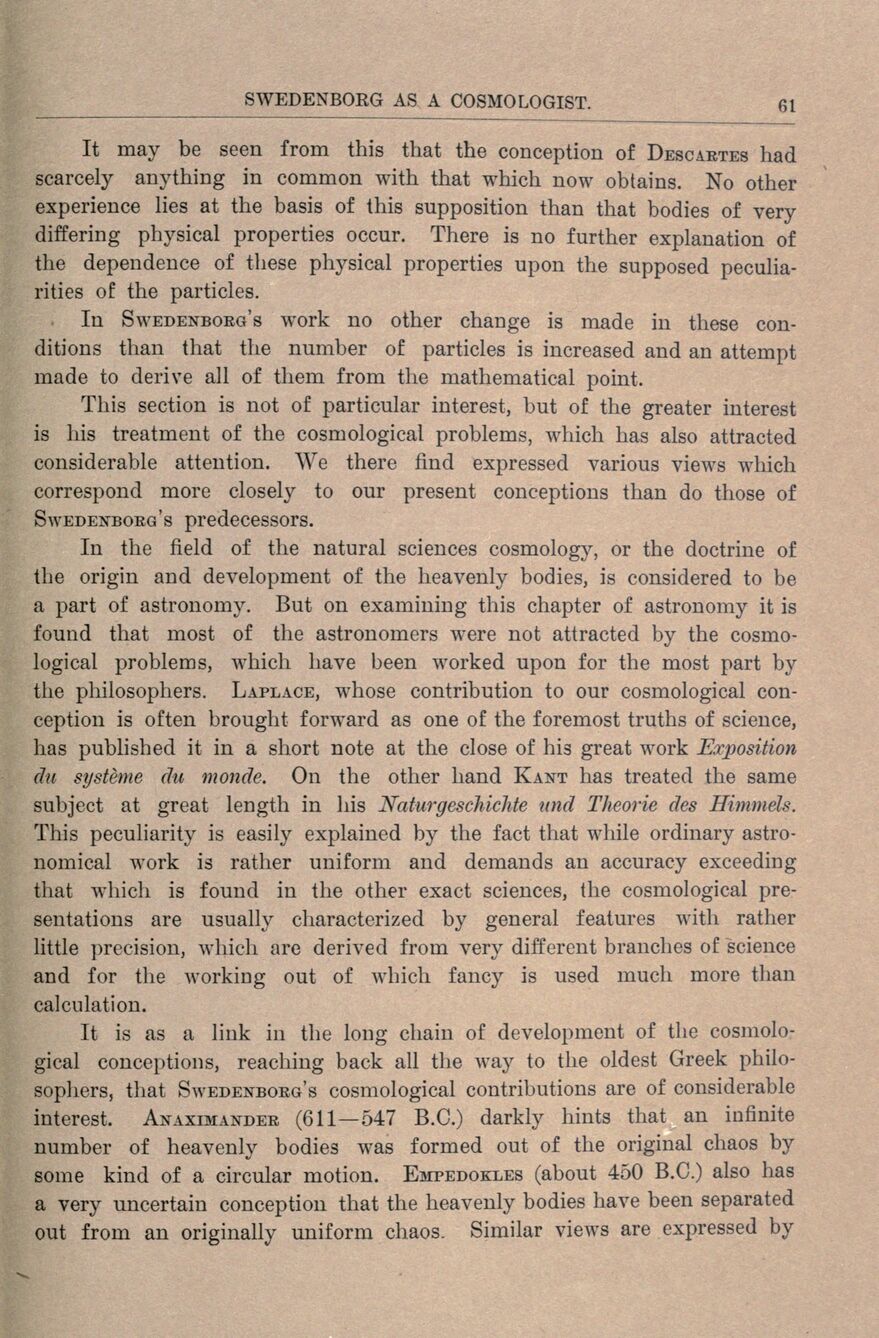
Full resolution (JPEG) - On this page / på denna sida - Sidor ...

<< prev. page << föreg. sida << >> nästa sida >> next page >>
Below is the raw OCR text
from the above scanned image.
Do you see an error? Proofread the page now!
Här nedan syns maskintolkade texten från faksimilbilden ovan.
Ser du något fel? Korrekturläs sidan nu!
This page has never been proofread. / Denna sida har aldrig korrekturlästs.
It may be seen from this that the conception of Descartes had
scarcely anything in common with that which now obtains. No other
experience lies at the basis of this supposition than that bodies of very
differing physical properties occur. There is no further explanation of
the dependence of these physical properties upon the supposed
peculia-rities of the particles.
In Swedenborg’s work no other change is made in these
con-ditions than that the number of particles is increased and an attempt
made to derive all of them from the mathematical point.
This section is not of particular interest, but of the greater interest
is his treatment of the cosmological problems, which has also attracted
considerable attention. We there find expressed various views which
correspond more closely to our present conceptions than do those of
Swedenborg’s predecessors.
In the field of the natural Sciences cosmology, or the doctrine of
the origin and development of the lieavenly bodies, is considered to be
a part of astronomy. But on examining this chapter of astronomy it is
found that most of the astronomers were not attracted by the
cosmological problems, which have been worked upon for the most part by
the philosophers. Laplace, whose contribution to our cosmological
conception is often brouglit forward as one of the foremost truths of science,
has published it in a short note at the close of his great work Exposition
du systéme du monde. On the other liand Kant has treated the same
subject at great length in his Naturgeschichte und Theorie des Himmels.
This peculiarity is easily explained by the faet that while ordinary
astro-nomical work is rather uniform and demands an accuracy exceeding
that which is found in the other exact Sciences, the cosmological
presentations are usually cliaracterized by general features with rather
little precision, which are derived from very different branches of science
and for the working out of which fancy is used mueh more than
calculation.
It is as a link in the long cliain of development of the
cosmological conceptions, reaching back all the way to the oldest Greek
philosophers, that Swedenborg’s cosmological contributions are of considerable
interest. Anaxihander (611—547 B.C.) darkly hints that an infinite
number of heavenly bodies was formed out of the original chaos by
some kind of a eircular motion. Empedokles (about 450 B.C.) also has
a very uncertain conception that the heavenly bodies have been separated
out from an originally uniform chaos. Similar views are expressed by
<< prev. page << föreg. sida << >> nästa sida >> next page >>